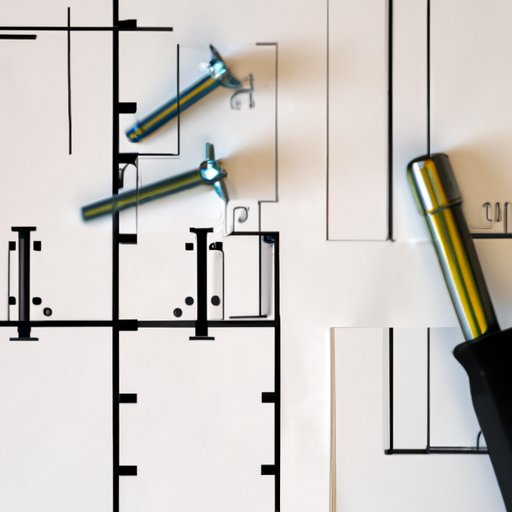
Introduction
Whether you’re a seasoned DIYer or a novice, knowing how to find a stud is an essential skill to have. A stud is a vital part of every wall, as it serves as the support for everything attached to the wall. If you are hanging a heavy picture, mounting a TV, or doing any kind of construction work in your home, it is essential to locate the stud accurately.
Incorrectly locating a stud can result in damage to the wall, your prized possessions, or worse still, bodily harm. In this comprehensive guide, we explore various ways on how to find a stud accurately.
Start with the Basics
Before we delve into the different techniques for locating a stud, we first need to understand the types of stud finders available in the market and how to use them accurately to locate studs.
There are two types of stud finders; Magnetic stud finders and Electronic stud finders. Magnetic stud finders work by detecting the metal nails or screws used to attach the drywall to the stud. On the other hand, electronic stud finders detect changes in the density of the material used in the wall.
To use a stud finder, start by inserting fresh batteries and calibrating it as per the instructions provided. Place the finder on the wall and scan horizontally to detect the edges of the stud. Mark the edges with a pencil, and repeat the process vertically to determine the center of the stud. Mark the center with a pencil as well, these marks will guide you accurately in finding the stud.
Look for Visible Signs
Another way to find studs is by looking for visible signs that indicate the location of studs. The visible signs include the baseboards, crown moldings, or chair rails. When a wall is constructed, these features are attached to the studs, making them easy to locate.
To identify the locations of these features on the wall, run your fingers along the edges slowly until you locate the studs. Another trick is to use a flashlight to shine along the bottom of the wall. The flashlight will cast a shadow on any bumps on the wall, making it easier to locate the studs.
Look for Electrical Outlets
Electrical outlets are another common visible sign that can help you locate the studs. In most cases, outlets are attached to a stud, making it easy to locate them.
Start by turning off the power supply and removing the cover plate from the outlet. Look inside the opening; you should be able to see the edge of the adjoining stud. Use a ruler or a straight edge to draw a line down the wall from the side of the opening where you see the stud. Repeat this for each outlet in the room to determine all the possible stud locations.
Locate a Wall-Plate
Switch or outlet plates are attached to the wall by screws, which are driven into the studs. Therefore, locating a switch or outlet plate can help you determine the location of the stud.
Start by removing the screws that hold the switch or outlet plate in place. After removing the screws, try moving the plate around on the wall. If it doesn’t move, then the screws are attached to the stud. Mark the location of the screws on the wall with a pencil, and you will have located a stud.
Using a Tapping Technique
If you don’t have a stud finder or electrical outlets handy, tapping the wall is another way to locate the studs accurately. Tapping the wall lets you hear the different sounds produced when tapping directly over a stud or tapping between studs.
When tapping over a stud, the wall will produce a solid sound, while tapping between studs produces a hollow sound. Start tapping at one end of the wall, and slowly move across until you locate a stud. It would help if you tapped at regular intervals, as the distance between studs is typically 16 to 24 inches apart.
Study the Blueprints or House Plans
Another helpful technique is studying the house plans or blueprints. If you are starting a construction or renovation project that requires you to locate the studs, the blueprint or house plans can be a helpful resource.
The blueprints contain detailed information on the materials and dimensions of the house, including the spacing of the studs on the walls. Before starting your project, take time to examine the blueprints or house plans, and use the information provided to plan your project accurately.
Conclusion
Locating a stud is an essential skill to have, whether you are a DIY enthusiast or a professional contractor. We have explored various techniques on how to find a stud, including using stud finders, visible signs, electrical outlets, wall-plates, tapping techniques, and studying blueprints or house plans. Remember to locate studs accurately to avoid damaging your walls or possessions, or worse still, getting injured. We hope this guide has been helpful and informative, and we are confident that our tips will help you find a stud accurately.
Additional tips and tricks include wearing protective gear, such as gloves and safety glasses, when dealing with construction projects, and seeking professional help if you are unsure of the techniques.




